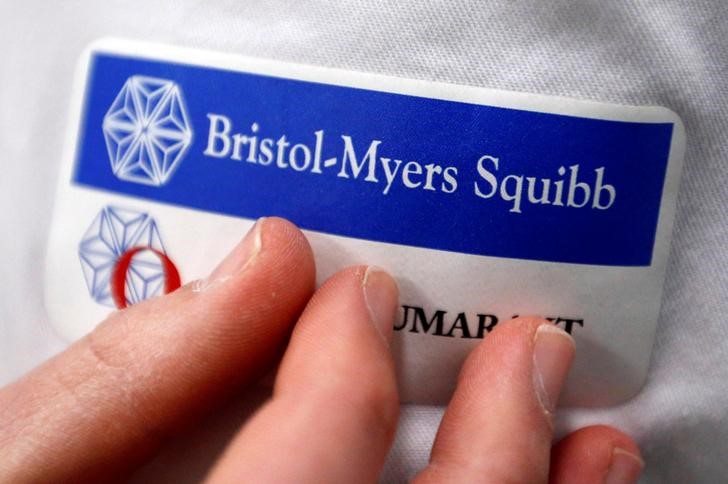CVS Group profit drops 7.4% as revenue rises on Australia expansion, asset sale
Bristol-Myers Squibb Company (NYSE:BMY) presented its first quarter 2025 results on April 24, revealing a significant milestone in its portfolio transition strategy while raising its full-year guidance. The pharmaceutical giant reported that its growth portfolio now contributes equal revenue to its legacy products, marking a pivotal moment in the company’s strategic transformation.
Introduction & Market Context
BMY shares closed at $48.53 on April 23, down 2.59% ahead of the earnings presentation, with the stock trading in a 52-week range of $39.35-$63.33. However, premarket trading on April 24 showed a 1.52% increase to $49.27, suggesting positive investor reaction to the quarterly results.
The company reported global net sales of approximately $11.2 billion, representing a 6% year-over-year growth (4% excluding foreign exchange effects), as it continues to navigate the transition from its mature product lineup to newer growth drivers.
As shown in the following performance overview, BMY achieved both revenue growth and significant EPS improvement:

Quarterly Performance Highlights
Bristol-Myers Squibb’s Q1 2025 results demonstrated solid execution of its strategic priorities, with non-GAAP earnings per share of $1.80, a substantial improvement from the -$4.40 reported in Q1 2024. GAAP EPS also showed strong recovery at $1.20 compared to -$5.89 in the prior-year period.
The company highlighted multiple R&D milestones for key products including OPDIVO, Breyanzi, CAMZYOS, and Milvexian, reinforcing its pipeline progress. These achievements contributed to management’s decision to raise full-year guidance for both revenue and earnings.
CEO Chris Boerner emphasized the company’s transformation during the presentation: "We are evolving into a fundamentally different company with a clear multi-year plan," echoing similar statements from previous earnings calls.
Portfolio Transition Progress
The most significant development in Q1 2025 was the equal revenue contribution from BMY’s growth and legacy portfolios, with each generating $5.6 billion. This represents a pivotal moment in the company’s strategic shift, as the growth portfolio increased by 16% year-over-year while the legacy portfolio continued its expected decline.
The following chart clearly illustrates this transition:

The growth portfolio now includes several strong performers like Opdivo, Opdualag, Yervoy, Reblozyl, Camzyos, Breyanzi, and newer launches such as Sotyktu, Zeposia, Krazati, and Cobenfy. Meanwhile, the legacy portfolio, including Eliquis, Revlimid, Pomalyst, Sprycel, and Abraxane, is experiencing the anticipated revenue decline as these products face generic competition and market maturity.
Product Performance Analysis
Oncology Portfolio
BMY’s oncology portfolio showed mixed results, with strong performance from newer products offsetting challenges in some established treatments. Opdualag achieved 23% growth to $252 million, while Krazati sales surged 125% to $48 million. The company noted that Opdualag now commands approximately 30% market share in its approved indications.
The detailed oncology product performance is shown below:

Hematology Portfolio
The hematology segment demonstrated the company’s transition strategy in action. While legacy products Revlimid and Pomalyst declined by 44% and 24% respectively, growth products like Reblozyl (+35%) and Breyanzi (+146%) showed exceptional performance. Notably, Breyanzi has achieved the #1 position among CAR T therapies in the U.S. market.

Cardiovascular and Immunology Products
In cardiovascular, Camzyos continued its strong growth trajectory with an 89% increase to $159 million, offsetting a slight 4% decline in Eliquis sales, which was attributed to the impact of Medicare Part D redesign despite continued demand growth.
The immunology portfolio saw Sotyktu sales increase by 27% to $55 million, benefiting from improved U.S. access positions effective January 1, 2025, while Orencia experienced a modest 4% decline.
Financial Results
BMY’s financial performance showed significant improvement compared to Q1 2024, particularly in earnings metrics. The company maintained a solid gross margin of 73.1% on a non-GAAP basis, though this represented a slight decline from 75.5% in the prior-year period.
Operating expenses decreased year-over-year, contributing to the improved bottom line. The effective tax rate normalized to 15.1% on a non-GAAP basis, compared to -9.0% in Q1 2024.
The comprehensive financial comparison is illustrated below:

The company also outlined its strategic approach to capital allocation, highlighting cash flow from operations of $2.0 billion in Q1 2025 and progress on debt reduction, with approximately $6 billion of its $10 billion target achieved as of Q1 2025.

Revised Guidance & Outlook
In a vote of confidence for its business trajectory, Bristol-Myers Squibb raised its full-year 2025 guidance. The company now projects total revenues of approximately $45.8-$46.8 billion, up from its previous estimate of $45.5 billion. Non-GAAP EPS guidance was also increased to $6.70-$7.00, compared to the prior range of $6.55-$6.85.
The revised guidance reflects stronger-than-expected performance in the growth portfolio and improved foreign exchange outlook, as detailed below:

Looking ahead, BMY highlighted several key milestones expected between 2025-2027, including pivotal data for Opdualag, Camzyos, and Reblozyl, as well as registrational data for new molecular entities like Milvexian, Admilparant, and Golcadomide.
CFO David Elkins emphasized the company’s commitment to continued investment in growth drivers while maintaining financial discipline. The capital allocation strategy balances business development opportunities, balance sheet strength, and shareholder returns through dividends and share repurchases.
Bristol-Myers Squibb’s Q1 2025 results demonstrate meaningful progress in its strategic transformation, with the growth portfolio now matching legacy product revenue while delivering strong growth rates. The raised guidance suggests management’s confidence in sustaining this momentum throughout 2025, despite ongoing challenges in the competitive pharmaceutical landscape.
Full presentation:
This article was generated with the support of AI and reviewed by an editor. For more information see our T&C.
